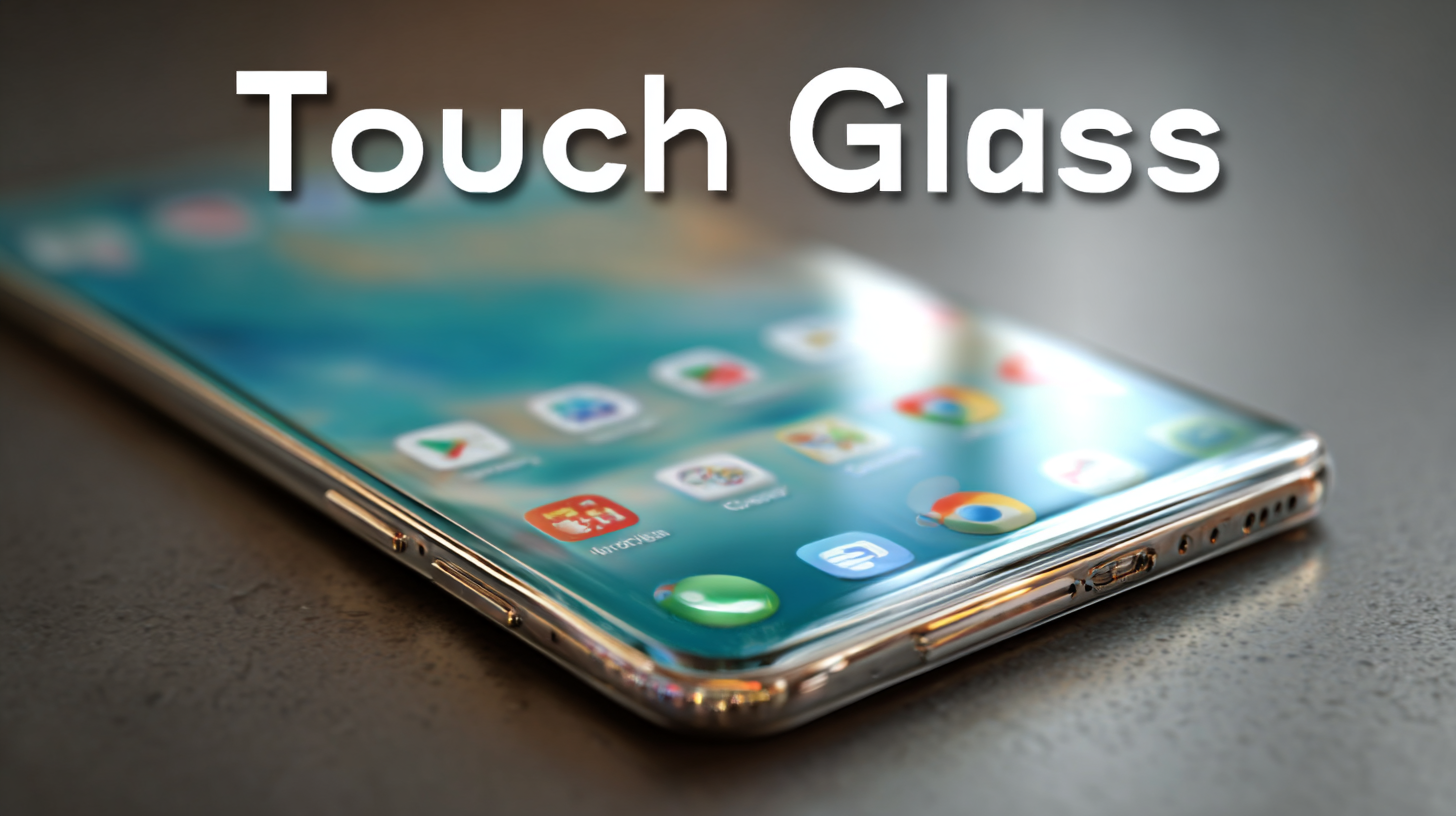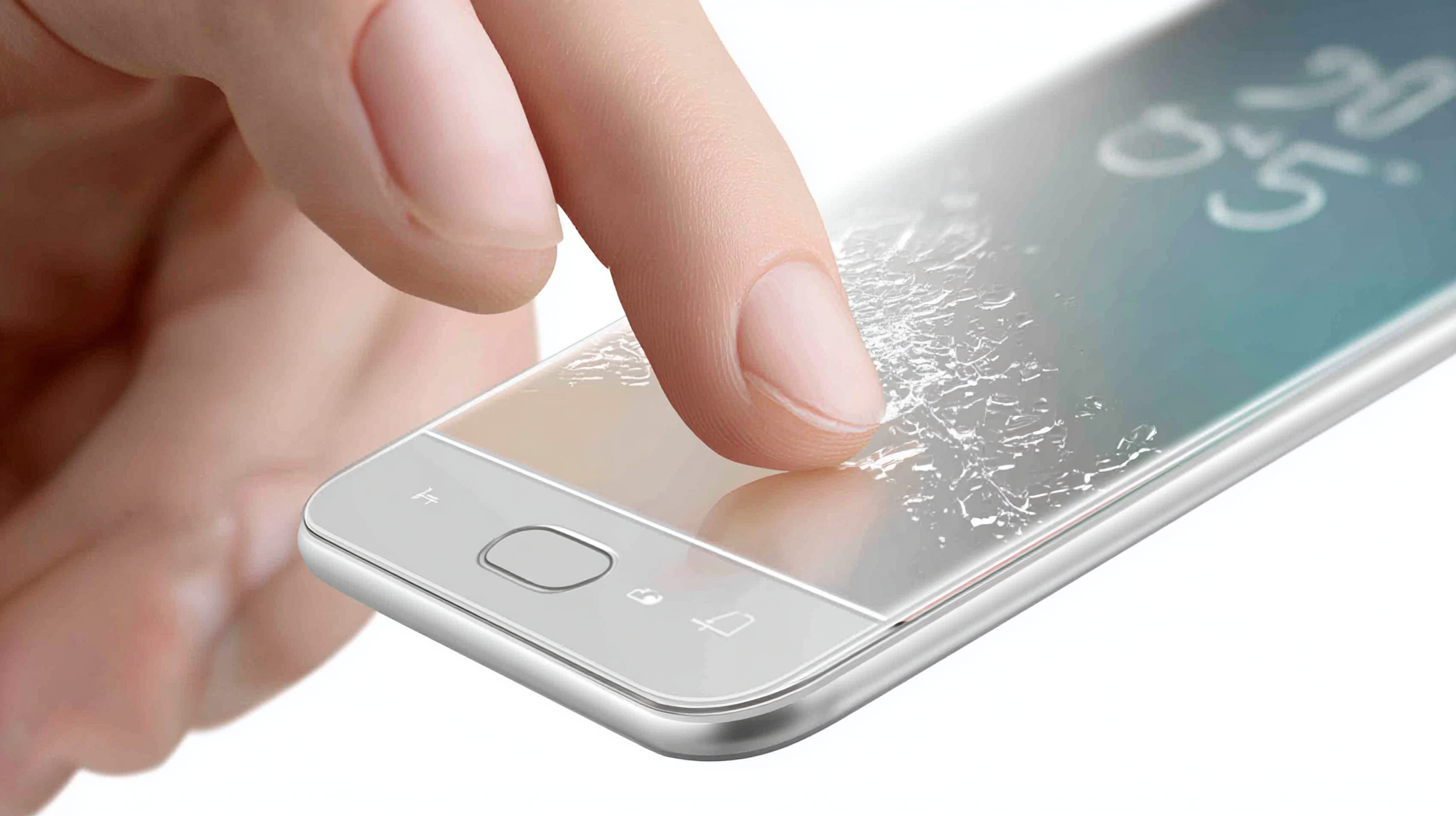
As we look ahead to 2025, the rapidly evolving global markets demand innovative and adaptable solutions, particularly within the realm of technology. One critical component that plays a pivotal role in consumer electronics, appliances, and industrial equipment is the Touch Screen Cover Glass. This essential element not only enhances user experience through improved tactile interactions but also caters to the increasing demand for durability and aesthetic appeal. In this blog, we will delve into the emerging trends influencing the Touch Screen Cover Glass industry, analyze market dynamics, and provide insights on how to choose the best cover glass options tailored for global markets. By understanding these trends and choices, manufacturers and consumers alike can make informed decisions that align with the future of technology.

As we look ahead to 2025, the landscape of touch screen technology is evolving at a rapid pace. One of the most significant trends is the rise of ultra-thin and flexible touch screen covers, which not only enhance the aesthetic appeal of devices but also improve their functionality. These innovations allow manufacturers to create sleeker designs without sacrificing durability or performance. Furthermore, advancements in materials such as reinforced glass and anti-reflective coatings are improving the user experience by providing better clarity and responsiveness, making interactions more seamless and enjoyable.

Another emerging trend is the increased integration of touch screen technology in various sectors, from automotive to healthcare. As more industries adopt touch interfaces, the demand for high-quality cover glass that meets diverse environmental and operational requirements is on the rise. This shift is prompting manufacturers to explore new coatings—such as antimicrobial surfaces for medical devices—that cater to specific market needs. Understanding these trends is crucial for stakeholders aiming to select the best touch screen cover glass suitable for global markets in 2025. By staying attuned to technological advancements and consumer preferences, companies can ensure they are well-prepared to navigate the competitive landscape.
When selecting touch screen cover glass for global markets, several key factors come into play that significantly influence the decision-making process. First and foremost is the glass composition itself. According to a report by Grand View Research, the global touch screen market is expected to reach around $20 billion by 2025, highlighting the surge in consumer demand for high-quality touch interfaces. Manufacturers must consider whether to use standard soda-lime glass or specialized materials like Gorilla Glass, which offers enhanced durability and scratch resistance, essential for high-end devices.

Another crucial factor is the glass thickness and its impact on touch sensitivity and overall user experience. A study from ResearchAndMarkets emphasizes that thinner cover glass can lead to better touch responsiveness, as it reduces the distance between the user’s finger and the underlying display technology. However, striking a balance between thinness and strength is vital to ensure the glass can withstand daily wear and tear. Finally, manufacturers must keep an eye on regional market preferences and regulatory standards, which can vary significantly, influencing both design choices and material sourcing. With these factors in mind, companies can make informed decisions that align with market trends and consumer expectations.
 The global touch screen market is experiencing a transformative shift, with Chinese manufacturing playing a crucial role in enhancing its competitiveness. China's advanced production capabilities, coupled with a robust supply chain, have positioned it as a leading player in manufacturing touch screen cover glass. With advanced technology and mass production techniques, Chinese manufacturers can produce high-quality glass at a lower cost, enabling global brands to offer competitive pricing while maintaining product innovation.
The global touch screen market is experiencing a transformative shift, with Chinese manufacturing playing a crucial role in enhancing its competitiveness. China's advanced production capabilities, coupled with a robust supply chain, have positioned it as a leading player in manufacturing touch screen cover glass. With advanced technology and mass production techniques, Chinese manufacturers can produce high-quality glass at a lower cost, enabling global brands to offer competitive pricing while maintaining product innovation.
Moreover, the emphasis on research and development within China has led to significant advancements in glass durability and touchscreen responsiveness. As companies strive to differentiate their products in increasingly saturated markets, the role of superior touch screen cover materials becomes paramount. By sourcing glass from Chinese manufacturers, companies can leverage cutting-edge materials that enhance user experience, such as anti-reflective and shatter-resistant coatings. The accessibility of these innovations not only boosts the competitiveness of global products but also ensures that manufacturers can meet the evolving demands of consumers, ultimately shaping the future of the touch screen landscape.
As global markets continuously evolve, the emphasis on sustainability in product design has become increasingly vital. When selecting touch screen cover materials, manufacturers must consider not only the durability and performance but also the environmental impact of their choices. Innovative materials such as recycled glass and bio-based polymers are emerging as viable alternatives, offering a reduced carbon footprint while still meeting the rigorous demands of consumer electronics.
Incorporating sustainable practices into the supply chain isn't just a trend; it's becoming a necessary standard. Companies that focus on eco-friendly touch screen cover solutions can appeal to a more environmentally conscious consumer base. By aligning product offerings with sustainability goals, brands not only enhance their marketability but also contribute to global efforts in reducing waste and pollution. Emphasizing responsible sourcing and lifecycle assessment will be key in shaping the future of touch screen technology, making it essential for businesses to reevaluate their material selections in line with these principles.
| Material Type | Recyclability (%) | Durability (H) | Sustainability Rating | Market Demand (Estimated Annual Volume) |
|---|---|---|---|---|
| Corning Gorilla Glass | 30% | 9 | High | 150 million units |
| Sapphire Glass | 50% | 9.5 | Very High | 80 million units |
| Plastic Laminate | 10% | 6 | Low | 200 million units |
| Tempered Glass | 40% | 8 | Medium | 120 million units |
| Bio-Based Polymer | 70% | 7 | High | 50 million units |
As the global demand for touch screen devices continues to surge, selecting the right touch screen cover glass becomes critical for enhancing durability and performance. A recent report forecasts that the B2B notebook and PC market, bolstered by increasing touchscreen device adoption, will reach an estimated market size of $258.9 billion in 2024, with a projected compound annual growth rate (CAGR) of 8.2% from 2025 to 2034. This trend signals an urgent need for innovative solutions that can protect and prolong the life of touch screens, ensuring optimal user experience.
Recent industry events have showcased pioneering advancements in display technology, with several companies unveiling state-of-the-art AMOLED innovations that enhance viewing experiences. These breakthroughs highlight the potential for enhanced touch screen cover glass materials that not only resist scratches and impacts but also support improved sensitivity and clarity. As manufacturers prioritize durability alongside performance, the integration of advanced materials such as engineering ceramics is becoming increasingly relevant, targeting applications from consumer electronics to automotive displays.